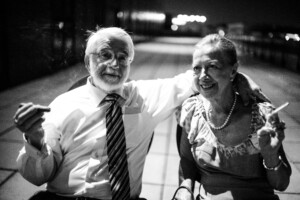$1.5 billion Bush Tax on Air Travel Fails Cost-Benefit Test
Contact for Interviews: Richard Morrison, 202.331.2273<?xml:namespace prefix = o ns = “urn:schemas-microsoft-com:office:office” />
Washington, D.C., February 10, 2005—The Bush administration’s fiscal year 2006 budget includes $1.5 billion in new “user fee” taxes on airline passengers to offset airport security costs. It’s a plan that fails cost-benefit analysis, according to Fred L. Smith, President of the Competitive Enterprise Institute, speaking at a press conference hosted by the Air Transport Association (ATA).
Statement by Fred Smith:
I’m <?xml:namespace prefix = st1 ns = “urn:schemas-microsoft-com:office:smarttags” />Fred Smith and I head the Competitive Enterprise Institute. We’re a pro-market policy group focused on the need to ensure that public policy services the public interest. I’m here today to argue against the (more than) doubling of the government fees tacked onto airline tickets. It’s a plan that would hurt consumers and the airline industry without increasing security in a cost-effective way.
The administration expects to raise an extra $1.5 billion from the fees, in addition to the billions government already receives from the myriad taxes and fees levied on airfare. That money comes from somewhere. Those ever-higher costs are borne by consumers and airlines. For travelers, the Bush tax increase would mean not only higher fares but more trips by car and other forms of ground transportation—less safe than flying; more waiting around at airports for security procedures; and, ultimately, fewer choices among air carriers and flights.
For all those costs, it’s not clear that the money will even be well-spent. It goes to a government agency that has little reason to consider the overall cost or safety of travel. The Transportation Security Administration (TSA) lacks incentive to ask whether an additional “safety” factor does or does not make a meaningful contribution to air safety. Like all “precautionary” agencies, their bias is to ensure against risks for which they, the bureaucrats, are responsible. To put “risk” in perspective, there’s no such thing as risk-free travel; there can only be safer travel. Airlines, data consistently show, offer a safer mode of travel compared to most alternatives, even taking into account any terrorist threat. Instead of deterring Americans from air travel through higher ticket taxes, policymakers should consider whether the current airport security procedures—the delays, mandates to remove shoes, etc.—actually produces net safety gains.
Moreover, lawmakers who want to improve homeland security should re-examine whether the current balkanization of our nation’s air travel network is a good system. Wouldn’t it be better to allow airport managers and airline owners to work together to coordinate operational decisions, including better security. It’s time to bring together an appropriate mix of both private sector and government measures that ensure a proper balance of safety, convenience and affordability.
